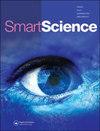基于傅里叶变换和小波神经模糊系统的汽轮机振动智能故障诊断
IF 1.4
Q2 MULTIDISCIPLINARY SCIENCES
引用次数: 0
摘要
摘要燃气轮机在天然气输送和发电中起着至关重要的作用,但燃气轮机容易出现不稳定现象,从而导致振动,缩短设备寿命,并导致灾难性故障。为了应对这些挑战,本文介绍了一种综合方法,该方法利用傅里叶变换、神经模糊系统和小波分析等先进技术对MS5002C涡轮机的状况进行连续监测。该方法首先收集运行数据,利用傅里叶变换测量振动量,通过分析信号获得的频谱数据准确地表示振动量的演变。然后利用神经模糊系统的自适应推理算法生成汽轮机故障指标。这种方法能够开发出一种基于模型的故障检测方法,将实际涡轮机运行情况与从预先建立的模型中得出的估计运行情况进行比较,从而对检测到的故障进行分类。为了提高诊断策略的决策质量、评估和有效性,应用了基于小波变换的多分辨率分析。各种实施和验证试验的结果表明,这种智能诊断方法在检测和分析燃气轮机振动方面是有效的。本文在实时监测方面取得了良好的成果,保证了汽轮机的运行安全。关键词:故障诊断燃气轮机振动不稳定性傅里叶变换神经模糊系统小波披露声明作者未报告潜在利益冲突。本文章由计算机程序翻译,如有差异,请以英文原文为准。
Intelligent faults diagnostics of turbine vibration’s via Fourier transform and neuro-fuzzy systems with wavelets exploitation
ABSTRACTGas turbines play a vital role in gas transportation and power generation, but they are prone to instability phenomena that can lead to vibrations, shorten equipment lifespan, and result in catastrophic failures. To tackle these challenges, a paper introduces an integrated approach that leverages advanced techniques like Fourier transform, Neuro-Fuzzy systems, and wavelet analysis for continuous monitoring of the MS5002C turbine’s condition. The proposed method begins by collecting operational data and utilizing the Fourier transform to measure vibratory quantities, accurately representing their evolution through spectral data obtained from the analyzed signals. Adaptive inference-based algorithms of neuro-fuzzy systems are then employed to generate turbine failure indicators. This approach enables the development of a model-based fault detection method that compares the actual turbine operation with the estimated operation derived from a pre-established model, enabling the classification of detected faults. To enhance decision-making quality, evaluation, and validation of the diagnostic strategy’s performance, a multi-resolution analysis based on the wavelet transform is applied. The presented results from various implementation and validation tests demonstrate the effectiveness of this intelligent diagnostic approach in detecting and analyzing gas turbine vibrations. The paper exhibits promising outcomes in real-time monitoring, ensuring the operational safety of the turbine.KEYWORDS: fault diagnosticsgas turbinevibrations instabilitiesFourier transformneuro-fuzzy systemswavelets Disclosure statementNo potential conflict of interest was reported by the author(s).
求助全文
通过发布文献求助,成功后即可免费获取论文全文。
去求助
来源期刊

Smart Science
Engineering-Engineering (all)
CiteScore
4.70
自引率
4.30%
发文量
21
期刊介绍:
Smart Science (ISSN 2308-0477) is an international, peer-reviewed journal that publishes significant original scientific researches, and reviews and analyses of current research and science policy. We welcome submissions of high quality papers from all fields of science and from any source. Articles of an interdisciplinary nature are particularly welcomed. Smart Science aims to be among the top multidisciplinary journals covering a broad spectrum of smart topics in the fields of materials science, chemistry, physics, engineering, medicine, and biology. Smart Science is currently focusing on the topics of Smart Manufacturing (CPS, IoT and AI) for Industry 4.0, Smart Energy and Smart Chemistry and Materials. Other specific research areas covered by the journal include, but are not limited to: 1. Smart Science in the Future 2. Smart Manufacturing: -Cyber-Physical System (CPS) -Internet of Things (IoT) and Internet of Brain (IoB) -Artificial Intelligence -Smart Computing -Smart Design/Machine -Smart Sensing -Smart Information and Networks 3. Smart Energy and Thermal/Fluidic Science 4. Smart Chemistry and Materials
 求助内容:
求助内容: 应助结果提醒方式:
应助结果提醒方式:


